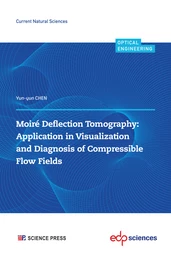Introduction................................................. V
Foreword ...................................................XI
CHAPTER 1
Fish Communities and River Ecosystems........................... 1
1.1 Species ................................................4
1.1.1 Species Classification................................ 4
1.1.2 Fish ............................................. 5
1.1.3 Morphological Characters for Classification............... 5
1.2 Community .............................................8
1.2.1 Composition ....................................... 8
1.2.2 Proportion ........................................ 9
1.2.3 Structure ......................................... 9
1.2.4 Community Habitat ................................. 9
1.2.5 Environment ...................................... 9
1.2.6 Ecological Characters ................................10
1.2.7 Spatial Pattern.....................................10
1.2.8 Temporal Characteristics .............................10
1.3 Niche .................................................10
1.3.1 Ideal Niche ........................................11
1.3.2 Real Niche ........................................ 12
1.3.3 Conservation ...................................... 12
1.3.4 Multidimensionality .................................12
1.3.5 Overlap .......................................... 12
1.3.6 Niche Breadth ..................................... 12
1.3.7 Ecological Equivalents ...............................12
1.3.8 Coincident Species ..................................13
1.3.9 Species Evolution and Niche........................... 13
1.4 River Ecosystem Elements................................. 13
1.4.1 Water Chemistry ................................... 14
1.4.2 Water Quality ..................................... 14
1.4.3 Aquatic Life .......................................15
1.4.4 Organic Detritus ...................................16
1.4.5 Productivity of Water Bodies.......................... 16
1.4.6 Trophic Level ......................................17
1.4.7 Natural Balance ....................................17
1.4.8 Water Pollution ....................................17
1.4.9 Algal Blooms ...................................... 17
1.5 Freshwater Fish......................................... 18
1.5.1 Global Freshwater Fish Communities.................... 18
1.5.2 Community Characteristics of Freshwater Fish in China...... 20
CHAPTER 2
Fish Morphological Models and Mechanisms......................... 25
2.1 Multivariate Statistics..................................... 28
2.1.1 Regression Analysis .................................29
2.1.2 Linear Discriminant Analysis.......................... 29
2.1.3 Cluster Analysis ....................................29
2.1.4 Principal Component Analysis (PCA) ...................30
2.1.5 Correspondence Analysis .............................30
2.1.6 Factor Analysis ....................................30
2.1.7 Canonical Correlation Analysis......................... 30
2.2 Morphological Data Model................................. 31
2.2.1 Data Source ....................................... 32
2.2.2 Data Matrix ....................................... 32
2.2.3 Principles of the Correspondence Analysis Model........... 36
2.2.4 Contribution to Variance .............................37
2.2.5 Graph Representation of the Interspecific Relationships
Within Fish Communities............................. 38
2.3 The Model .............................................42
2.3.1 Species Relationship Model ...........................45
2.3.2 Character Fitness ...................................50
2.3.3 Applicability of New Species........................... 50
2.4 Examples of Model Application.............................. 51
2.4.1 Characterization of Community Species Relationships....... 51
2.4.2 Determining the Ideal Niche........................... 56
2.4.3 Iteration ..........................................62
2.4.4 Sample Iteration Order...............................64
2.4.5 Sample Iteration Constraints.......................... 65
2.4.6 Sample Normalization ...............................65
2.4.7 Model Checking .................................... 65
2.4.8 Model Workflow .................................... 65
2.4.9 Model Application and Limitations..................... 67
2.5 The Modeling Software.................................... 69
2.5.1 Data File and Editing ...............................69
2.5.2 Run ............................................. 71
CHAPTER 3
Relationship Between Community Structure and Species Succession ....... 73
3.1 Simulations of Species Removal.............................. 76
3.1.1 Osmeriformes Lcucosoma chinensis (Osbeck, 1765).......... 77
3.1.2 Cypriniformes...................................... 77
3.1.3 Siluriformes, Bagridae ...............................144
3.1.4 Perciformes .......................................150
3.1.5 Tetraodontiformes ..................................156
3.2 Simulated Community ....................................156
3.2.1 Niche Composition ..................................156
3.2.2 Niche Change ......................................160
CHAPTER 4
Relationship Between Community Niche and Succession................ 165
4.1 Characteristics of Community Stability........................ 167
4.1.1 Species Substitutability.............................. 171
4.1.2 Community Cohesion ................................171
4.1.3 Community Integration ..............................174
4.1.4 Characteristics of the Geographic Distribution
of the Ecological Niche Response ....................... 180
4.1.5 Differences ........................................187
4.1.6 Feeding Habits .....................................193
4.2 “Subunit Community” Succession............................ 198
4.2.1 Niche Changes in the “Subunit Community”.............. 201
4.2.2 Simulated Community Performance After Species Removal... 220
4.2.3 The Evolutionary Characteristics of the “Subunit
Communities” ..................................... 225
CHAPTER 5
Fish Community Reconstruction and Case Study..................... 231
5.1 River Ecosystems........................................ 232
5.1.1 River Structure ....................................233
5.1.2 River Ecological Function............................. 234
5.1.3 Composition of the Fish Diet.......................... 236
5.1.4 Fish Trophic Levels .................................242
5.2 Molecular Mechanisms of Energy Utilization and Ecological Niche ... 250
5.2.1 Fish Amylase ......................................251
5.2.2 Gene Sequence and Niche .............................253
5.2.3 Amylase Gene Transcription and Animal Feeding Habits..... 254
5.3 Species Selection for Community Construction.................. 255
5.3.1 Multispecies Model ..................................260
5.3.2 The Food Chain is Fully Functional..................... 262
5.3.3 Species Compatibility ................................264
5.4 Examples of Model Application.............................. 267
5.4.1 Relationship Between Model “Potential” and Community
Abundance ........................................ 267
5.4.2 Environmental Impact Analysis Reference Frame........... 271
5.4.3 Analysis of the Niche of the Artificial Community.......... 273
References.................................................. 275












